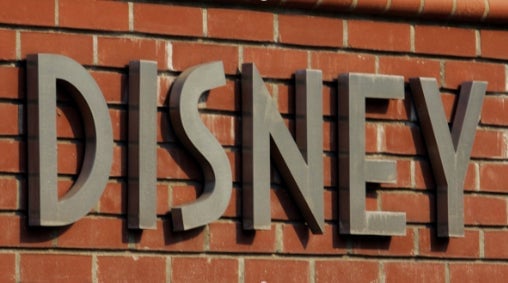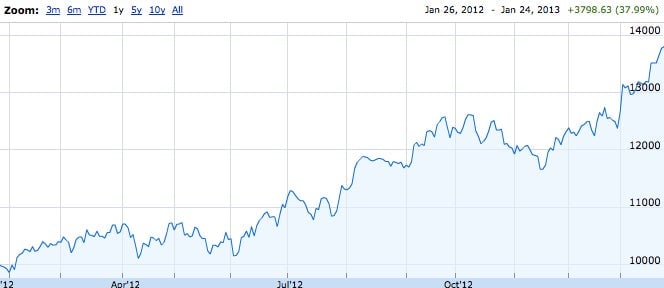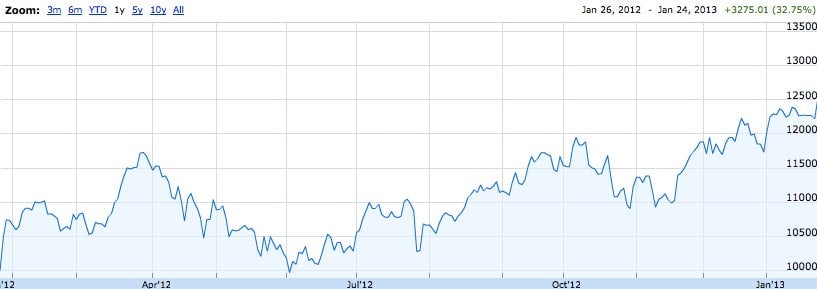Old media dinosaurs have been a better investment over the past year than high-tech giants
Supposedly, the media everywhere are under terrible pressure. Digital piracy and “cord-cutting” (people dropping cable TV subscriptions in favor of online viewing) are rampant; big TVs and projectors at home are displacing trips to the movie theater. The industry is nothing but tales of woe. Yet this week Goldman Sachs changed its outlook on the American media sector, from Neutral to Attractive.

Supposedly, the media everywhere are under terrible pressure. Digital piracy and “cord-cutting” (people dropping cable TV subscriptions in favor of online viewing) are rampant; big TVs and projectors at home are displacing trips to the movie theater. The industry is nothing but tales of woe. Yet this week Goldman Sachs changed its outlook on the American media sector, from Neutral to Attractive.
The truth is that dinosaur media, big entertainment, or legacy content—call it what you will—did more than fine in 2012, and the situation going into 2013 will likely look nothing like the apocalypse still raining down on the print publishing and music industries. As a matter of fact, a portfolio containing nothing but shares of Comcast, News Corp, CBS, Disney, Time Warner and Viacom—a combination of big media conglomerates and programming, cable and satellite providers—would have performed better in the last year than a portfolio consisting of stock in Yahoo, Apple, Netflix, Amazon and Google—the stars shaping the new media landscape. And that’s even after today’s 40% jump in Netflix’s share price, which came after the company unexpectedly announced that it turned profits last quarter.
The first portfolio would have generated 38% returns; the second, less than 33%.


There are several possible explanations for this surprising outcome. One is that media companies are cyclical and tend to fluctuate with the vagaries of the broader economy. Another explanation is that the days of the megalomaniacal media mogul are over, and media companies are no longer snapping up properties or searching for meaningless “synergies” just for the sake of getting bigger. There is also the fact that these companies are pleasing investors, returning capital to shareholders through dividends and stock buybacks.
The main thing to note is that digital technologies are not yet destroying legacy media companies and their old media distributors. Broadcasters like TimeWarner are behaving more like cable channels, allowing for on-demand viewing of HBO Go, for example. As Derek Thompson recently wrote on TheAtlantic.com, our sister publication, “cable has made Internet a second business [and content] companies have treated the Internet as a second window.”
It looks like old media isn’t dying just yet under the onslaught of technological disruption.